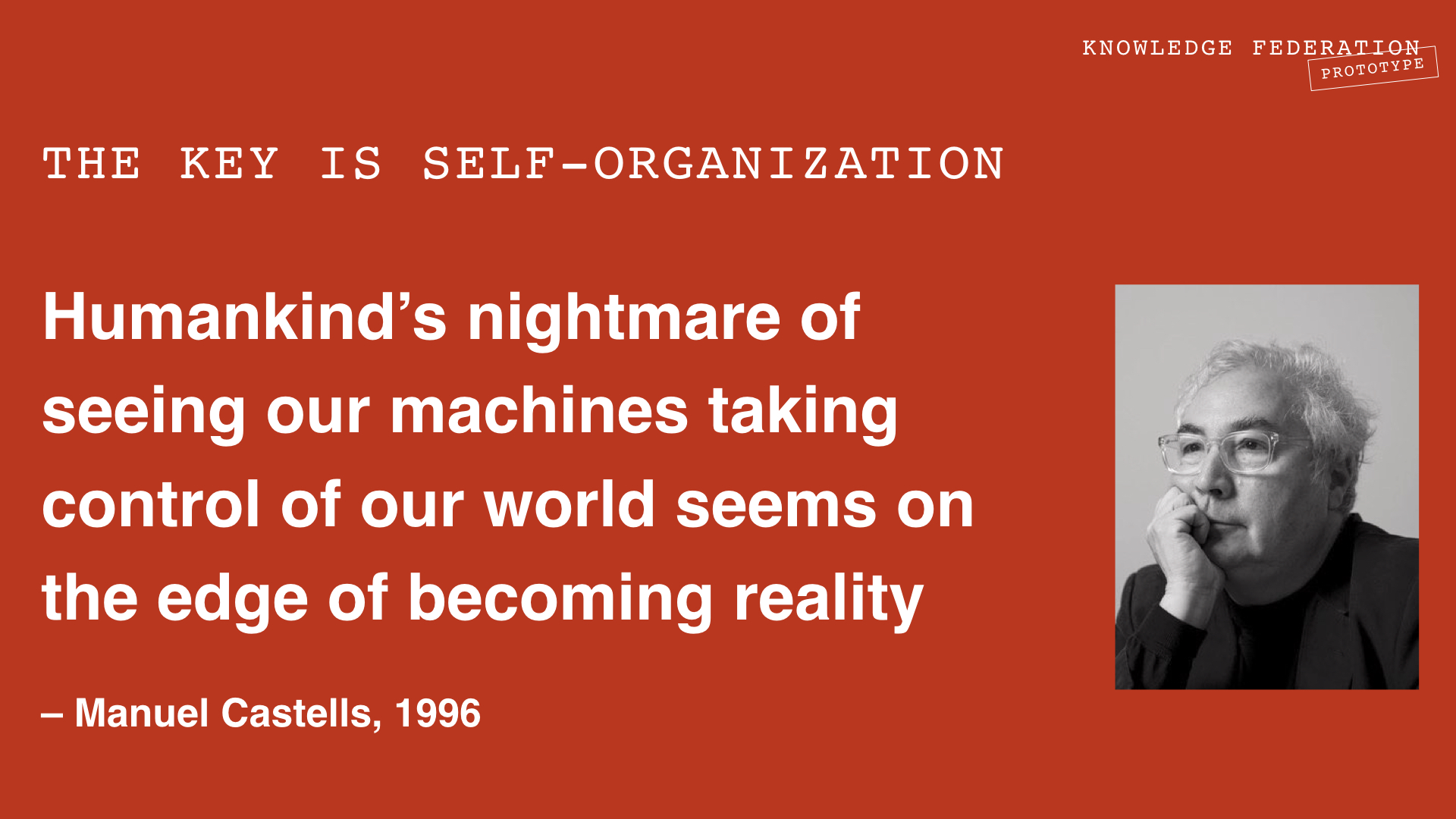Difference between revisions of "Power structure"
m |
|||
| Line 2: | Line 2: | ||
The <em>power structure</em> models the intuitive notions "power holder" and "political enemy" in a way that points to the misuses of power, and the threats to democracy, that we the people are not yet able to see, and our "democracy" is unable to handle. | The <em>power structure</em> models the intuitive notions "power holder" and "political enemy" in a way that points to the misuses of power, and the threats to democracy, that we the people are not yet able to see, and our "democracy" is unable to handle. | ||
| + | |||
| + | [[File:Thesystemisus.001.jpeg]] | ||
| + | |||
| + | To see why innovation needs to scale up to [[systemic innovation|<em>systemic innovation</em>]], imagine any of the [[systems in which we live and work<em>systems in which we live and work</em>]] (to turn Bela H. Banathy’s expression into a keyword) as a gigantic machine, comprising people and technology. Imagine yourself and all of us others as parts in that ‘machine’. | ||
| + | |||
| + | A function of a socio-technical system is to take everyone’s work as input, and turn it into socially useful effects. If in spite of the prowess of technology we are just as busy as ever – should we not take a closer look at those systems, and see if they might be wasting our time? | ||
| + | |||
| + | And if our best efforts result in problems rather than solutions – should we not check whether ''they'' might be dysfunctional? | ||
| + | |||
| + | Castells diagnosed the problem. | ||
| + | |||
| + | [[File:Castells.jpeg]] | ||
| + | |||
| + | Jantsch pointed to what's to be done. | ||
| + | |||
| + | [[File:Jantsch-vision.jpeg]] | ||
| + | |||
| + | |||
| + | <div class="page-header" > <h2>See also</h2> </div> | ||
| + | |||
| + | * Imagine the [[power structures|<em>power structure</em>]] as societal cancer. This [[keyword|<em>keyword</em>]] has been created to model the intuitive notions "political enemy" and "power holder". | ||
| + | |||
| + | * In [[five insights]] you can see the other five insights, and some comments about their relationships. | ||
<div class="page-header" > <h2>See also</h2> </div> | <div class="page-header" > <h2>See also</h2> </div> | ||
Revision as of 16:04, 31 January 2020
Power structure
The power structure models the intuitive notions "power holder" and "political enemy" in a way that points to the misuses of power, and the threats to democracy, that we the people are not yet able to see, and our "democracy" is unable to handle.
To see why innovation needs to scale up to systemic innovation, imagine any of the [[systems in which we live and worksystems in which we live and work]] (to turn Bela H. Banathy’s expression into a keyword) as a gigantic machine, comprising people and technology. Imagine yourself and all of us others as parts in that ‘machine’.
A function of a socio-technical system is to take everyone’s work as input, and turn it into socially useful effects. If in spite of the prowess of technology we are just as busy as ever – should we not take a closer look at those systems, and see if they might be wasting our time?
And if our best efforts result in problems rather than solutions – should we not check whether they might be dysfunctional?
Castells diagnosed the problem.
Jantsch pointed to what's to be done.
See also
- Imagine the power structure as societal cancer. This keyword has been created to model the intuitive notions "political enemy" and "power holder".
- In five insights you can see the other five insights, and some comments about their relationships.
See also
- This discussion of the power structure concept on Dino's Holoscope blog.
- The definition of power structure on this website.
- The Federation through Conversations is all about the power structure – although that keyword is not mentioned explicitly.



